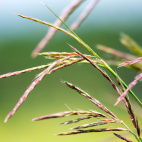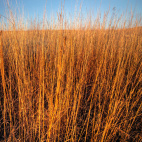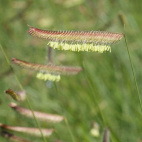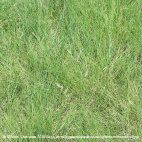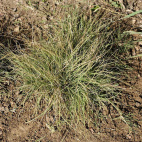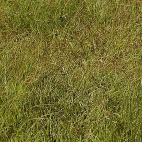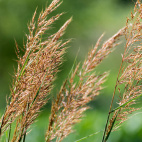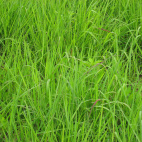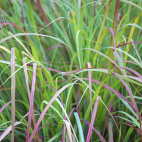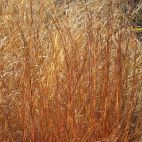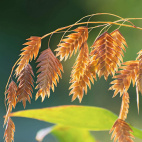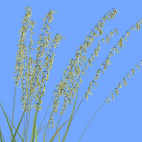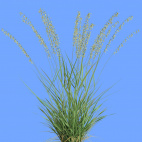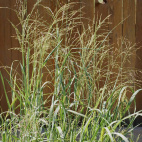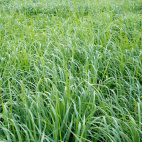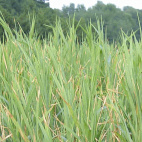Color
Availability
USDA Zone
Region
Type
Duration
Season
Germination
Soil
Sunlight
Height
Narrow Your Search
Color
Availability
USDA Zone
Region
Type
Duration
Season
Germination
Soil
Sunlight
Height
US Native Grass Seeds
-
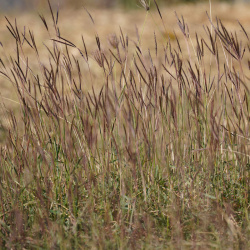 On Sale!
Big Bluestem Seeds
Andropogon gerardii
This is probably the most popular native grass of the tallgrass prairie. It is a warm-season grass, so it does not really get going until the summer heat sets in. It grows very tall in fertile soil, and the stems turn a lovely rusty color in the late fall and into winter.Quick Viewx
On Sale!
Big Bluestem Seeds
Andropogon gerardii
This is probably the most popular native grass of the tallgrass prairie. It is a warm-season grass, so it does not really get going until the summer heat sets in. It grows very tall in fertile soil, and the stems turn a lovely rusty color in the late fall and into winter.Quick ViewxBig Bluestem Seeds
Andropogon gerardii
This is probably the most popular native grass of the tallgrass prairie. It is a warm-season grass, so it does not really get going until the summer heat sets in. It grows very tall in fertile soil, and the stems turn a lovely rusty color in the late fall and into winter.
$3.48 Pkt - $5.96 / Oz -
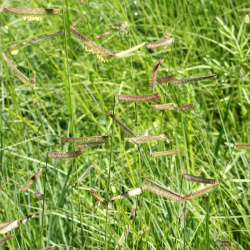 On Sale!
Blue Grama Seeds
Bouteloua gracilis
This native grass is easy to grow and provides the perfect contrast for a wildflower planting. This short bluish-green variety grows in grassy clumps during the warm season of summer, and can even be used for a shaggy no-mow green space.Quick View$3.48 Pkt - $7.65 / Oz
On Sale!
Blue Grama Seeds
Bouteloua gracilis
This native grass is easy to grow and provides the perfect contrast for a wildflower planting. This short bluish-green variety grows in grassy clumps during the warm season of summer, and can even be used for a shaggy no-mow green space.Quick View$3.48 Pkt - $7.65 / Oz -
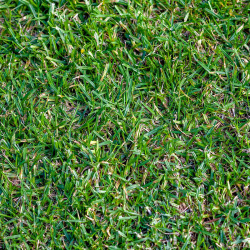 Buffalo Grass Seeds
Buchloe dactyloides
Most native grasses form large clumps, which do not work very well for mowing. Buffalo Grass spreads out more evenly like a turfgrass and is quite popular for those who want a native lawn that is resistant to drought and heat.Quick View$3.48 Pkt - $8.46 / Oz
Buffalo Grass Seeds
Buchloe dactyloides
Most native grasses form large clumps, which do not work very well for mowing. Buffalo Grass spreads out more evenly like a turfgrass and is quite popular for those who want a native lawn that is resistant to drought and heat.Quick View$3.48 Pkt - $8.46 / Oz -
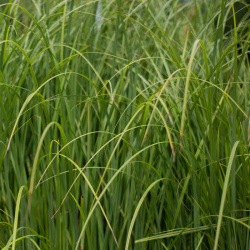 Cord Grass Seeds
Spartina pectinata
Forming dense colonies of tall vegetation, this water-loving grass adds beauty to shorelines and marshes during the warm seasons. This native perennial is an excellent choice for an area that has a lot of competition because it is quite aggressive.Quick View$3.48 Pkt - $16.57 / Oz
Cord Grass Seeds
Spartina pectinata
Forming dense colonies of tall vegetation, this water-loving grass adds beauty to shorelines and marshes during the warm seasons. This native perennial is an excellent choice for an area that has a lot of competition because it is quite aggressive.Quick View$3.48 Pkt - $16.57 / Oz -
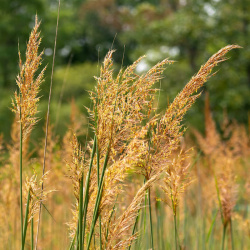 Indian Grass Seeds
Sorghastrum nutans
Indian Grass is on par with Big Bluestem in terms of both height and popularity. This warm-season perennial has large feathery seed plumes that turn a lovely rusty color in the fall, and become natural birdfeeders into the winter months.Quick View$3.48 Pkt - $5.96 / Oz
Indian Grass Seeds
Sorghastrum nutans
Indian Grass is on par with Big Bluestem in terms of both height and popularity. This warm-season perennial has large feathery seed plumes that turn a lovely rusty color in the fall, and become natural birdfeeders into the winter months.Quick View$3.48 Pkt - $5.96 / Oz -
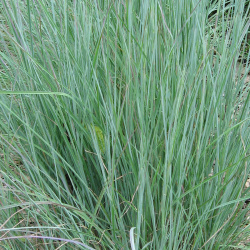 Little Bluestem Seeds
Schizachyrium scoparius
This warm-season perennial is probably the most popular native grass for short prairies. It is known as Bluestem because of the characteristic blue-purple stems at the base of the plant. These stems change into a bright copper color in the fall and persist as a food source for birds through the winter.Quick Viewx
Little Bluestem Seeds
Schizachyrium scoparius
This warm-season perennial is probably the most popular native grass for short prairies. It is known as Bluestem because of the characteristic blue-purple stems at the base of the plant. These stems change into a bright copper color in the fall and persist as a food source for birds through the winter.Quick ViewxLittle Bluestem Seeds
Schizachyrium scoparius
This warm-season perennial is probably the most popular native grass for short prairies. It is known as Bluestem because of the characteristic blue-purple stems at the base of the plant. These stems change into a bright copper color in the fall and persist as a food source for birds through the winter.
$3.48 Pkt - $6.84 / Oz -
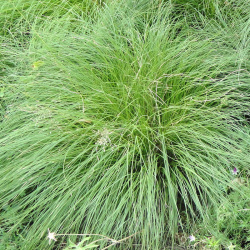 Northern Dropseed Seeds
Sporobolus heterolepis
This native perennial grass forms a big round mound of fine-textured foliage. It does not like to be soggy but can grow in most other soil conditions. This plant is a warm-season grass and is quite winter hardy.Quick View$3.48 Pkt - $24.00 / Oz
Northern Dropseed Seeds
Sporobolus heterolepis
This native perennial grass forms a big round mound of fine-textured foliage. It does not like to be soggy but can grow in most other soil conditions. This plant is a warm-season grass and is quite winter hardy.Quick View$3.48 Pkt - $24.00 / Oz -
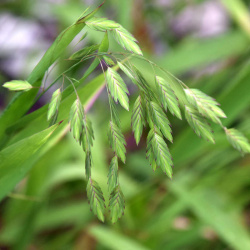 On Sale!
River Oats Seeds
Uniola latifolia
Also known as Northern Sea Oats, this perennial grass bears lovely ornamental seedheads that look like oats. This native likes a heavier soil where it can grow quickly in the heat of summer.Quick View$3.48 Pkt - $12.65 / Oz
On Sale!
River Oats Seeds
Uniola latifolia
Also known as Northern Sea Oats, this perennial grass bears lovely ornamental seedheads that look like oats. This native likes a heavier soil where it can grow quickly in the heat of summer.Quick View$3.48 Pkt - $12.65 / Oz -
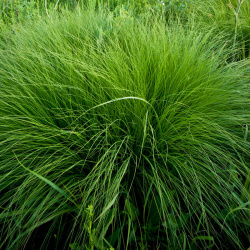 Rough Dropseed Seeds
Sporobolus asper
This native grass has fine delicate leaves and prefers to grow in light dry soil during the warmest months of the year. This perennial grows to a medium height and is at home as a member of a short grass prairie community.Quick View$2.98 Pkt - $7.09 / Oz
Rough Dropseed Seeds
Sporobolus asper
This native grass has fine delicate leaves and prefers to grow in light dry soil during the warmest months of the year. This perennial grows to a medium height and is at home as a member of a short grass prairie community.Quick View$2.98 Pkt - $7.09 / Oz -
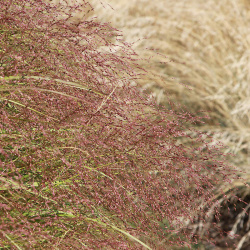 Out Of Stock
Sand Love Grass Seeds
Eragrostis trichodes
Appropriately named, this warm-season grass thrives in the sandy soil of open prairies and fields. This ornamental bunchgrass is valued for its purplish inflorescence and graceful, arching habit, and it's resistance to heat and drought.Quick View$2.98 Pkt - $11.47 / Oz
Out Of Stock
Sand Love Grass Seeds
Eragrostis trichodes
Appropriately named, this warm-season grass thrives in the sandy soil of open prairies and fields. This ornamental bunchgrass is valued for its purplish inflorescence and graceful, arching habit, and it's resistance to heat and drought.Quick View$2.98 Pkt - $11.47 / Oz -
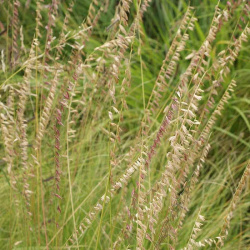 On Sale!
Side Oats Grama Seeds
Bouteloua curtipendula
This native grass showcases purplish seed spikes that uniquely grow only along one side of the stems. This grass is a very popular clump-forming species for short grass prairie plantings. It is a warm season perennial grass, so greens up when the ground gets good and warm.Quick Viewx
On Sale!
Side Oats Grama Seeds
Bouteloua curtipendula
This native grass showcases purplish seed spikes that uniquely grow only along one side of the stems. This grass is a very popular clump-forming species for short grass prairie plantings. It is a warm season perennial grass, so greens up when the ground gets good and warm.Quick ViewxSide Oats Grama Seeds
Bouteloua curtipendula
This native grass showcases purplish seed spikes that uniquely grow only along one side of the stems. This grass is a very popular clump-forming species for short grass prairie plantings. It is a warm season perennial grass, so greens up when the ground gets good and warm.
$3.48 Pkt - $7.47 / Oz -
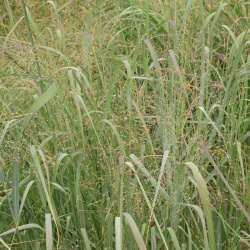 Switch Grass Seeds
Panicum virgatum
This popular native grass is common in many native restorations. It can grow it's airy seedheads in a wide range of soils, and is a medium height, making it a useful species. This grass is a warm season perennial, so the songbirds feast on the seeds into the fall season.Quick Viewx
Switch Grass Seeds
Panicum virgatum
This popular native grass is common in many native restorations. It can grow it's airy seedheads in a wide range of soils, and is a medium height, making it a useful species. This grass is a warm season perennial, so the songbirds feast on the seeds into the fall season.Quick ViewxSwitch Grass Seeds
Panicum virgatum
This popular native grass is common in many native restorations. It can grow it's airy seedheads in a wide range of soils, and is a medium height, making it a useful species. This grass is a warm season perennial, so the songbirds feast on the seeds into the fall season.
$2.98 Pkt - $5.96 / Oz -
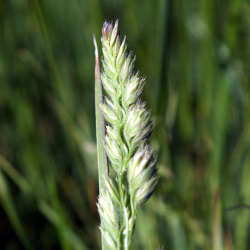 Upland Wild Timothy Seeds
Muhlenbergia racemosa
This native grass is not the same species that farmers use to make timothy hay. This perennial has soft leaves that do most of their growing the warm season of summer. It could be made into hay, but other species are better suited for that purpose.Quick View$3.48 Pkt - $32.00 / Oz
Upland Wild Timothy Seeds
Muhlenbergia racemosa
This native grass is not the same species that farmers use to make timothy hay. This perennial has soft leaves that do most of their growing the warm season of summer. It could be made into hay, but other species are better suited for that purpose.Quick View$3.48 Pkt - $32.00 / Oz



